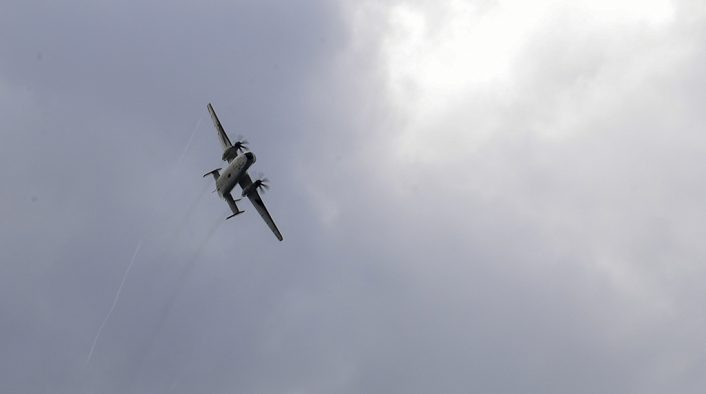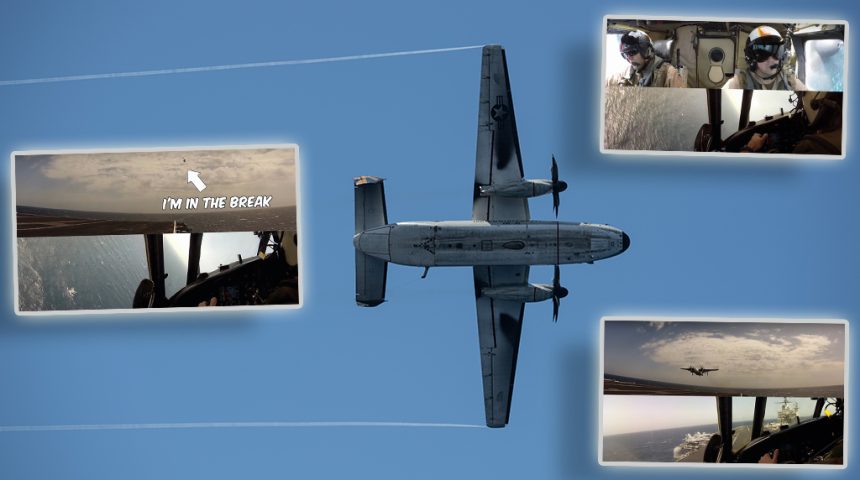Did you know even C-2 Greyhound aircraft perform the famous “Shit Hot Break”?
The “break” is the tight turn performed by aircraft recovering aboard a carrier to enter the downwind leg of the traffic pattern. Generally speaking, based on CV NATOPS Manual, a standard approach would see the aircraft entering the traffic pattern at the initial (3 miles astern, 800 feet) wings level, paralleling the BRC (Base Recovery Course) – the magnetic heading of the ship (it’s worth noticing that the final approach heading is not the same as the BRC because of the angled deck.
The break is usually performed as the aircraft overflies the flight deck or further upwind. But, if the turn is carried out with extra speed and right at or slightly aft (behind) the ship, then it is called a Shit Hot Break (SHB). A SHB adds more stress on the pilot, as the landing becomes much more difficult: there’s little room to fix anything during the approach as this becomes a continuous 360-degree turn to landing.
SHBs are regularly carried out by fast jets, that can bleed airspeed with an aggressive turn, but also slower and bigger E-2 Hawkeye and C-2 Greyhound aircraft can perform the difficult maneuver.

Here’s an interesting example, shared by our friend Rob Roy when he was flying the C-2 Greyhound: Rob is a former Naval Aviator who flew the Greyhound with the “Rawhides” of VRC-40 and has filmed lots of cool videos during his career. This clip, produced once again as a split screen footage, shows Rob’s first attempt at an SHB and also includes audio from the “Paddles” (the LSOs – Landing Signal Officers).
In fact, after the base turn, from the last three quarters of a nautical mile all the way to touchdown the pilot approaching the carrier can rely on talkdown provided by LSOs who are skilled and experienced pilots whose job is to watch the deck-landing of all the airplanes and provide the pilots with radio guidelines to adjust the final phase of the approach, and complement IFLOLS (Improved Fresnel Lens Optical Landing System) and ICLS (Instrumental Carrier Landing System) visual information.









